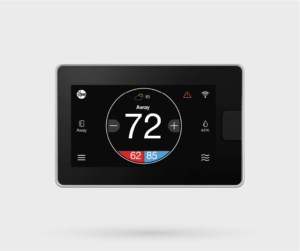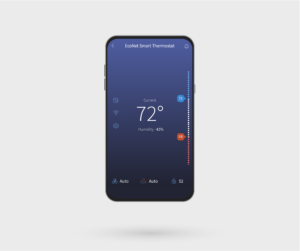Managing Your Home’s Humidity
June 24, 2021
You’re ready to enjoy the sunshine and warm weather. Learn how to discover, adjust and optimize your home’s humidity during the hottest time of the year.


How to discover, adjust, and optimize your home’s humidity levels for year-round comfort
With summer here, we’re ready to enjoy the sunshine and warm weather. But depending on where you live, a summer day could mean it feels muggy and sticky, or dry and arid. The difference between comfortable or clammy is the humidity.
Humidity is the presence of water vapor in the atmosphere. The more water that evaporates in a given area, the more water vapor rises into the air, which means more humidity. Hot places tend to be more humid than cool places because heat causes water to evaporate faster. If you find that your household air feels sticky in the summer and dry in the winter, now is a good time to check your home’s humidity levels and to try out new ways to increase your personal comfort.
Humidity 101
To fully understand how humidity affects your personal comfort, there are a few terms to know.
For many homes, the ideal humidity level lies between 30% to 60%, but every person has their own preferences based on their location and lifestyle. Humidifiers and dehumidifiers help to keep indoor humidity at a comfortable level for people, but also keep interior structures like drywall and lumber dry. Soggy drywall leads to deterioration and mold, so it is exceptionally important to make sure your home’s humidity stays within a comfortable range.
Managing Your Household’s Humidity
Thanks to modern technology, there are plenty of ways to help manage your home’s humidity levels and improve the quality and comfort level of your home’s air, throughout the year and seasonal changes.
- Upgrade your current system to make sure it is energy efficient and properly optimizing your air quality and humidity levels. The EcoNet Smart Monitoring System uses sensor technology to measure indoor RH percentage and—depending on the model and indoor conditions—can run in such a way to maximize dehumidification without overcooling the space drastically. Your comfort is personalized and easily monitored through the EcoNet app on your smartphone.
- Try a hygrometer. Instead of trying to guess or assume the humidity levels of your home, use a hygrometer for fast, easy, and inexpensive certainty (the most basic device can start around $8 and range up to $50 for additional features). Available at any home improvement store in either a digital or analog model, the best hygrometers sense and report the amount of humidity in the air in any given area. This is especially helpful in food or wine storage, or when housing other humidity-sensitive items, such as cigars, documents, animal tanks, and plants.


- Find your ideal indoor humidity levels based on the season and outdoor temperature. For most people, the comfortable range for RH in a home is between 30 and 60 percent, though to help control mold, it is best to keep it around 40 to 50 percent. Monitor the RH levels during different times in the year, such as after the first frost and during the rainy spring season, and adjust your home’s levels as needed using a humidifier or dehumidifier.
- While often confused for one another, a humidifier and a dehumidifier have different jobs in helping control the RH levels. A humidifier adds moisture into a space or room through mist and is most often used in winter months to keep skin and sinus passages from drying out. A dehumidifier removes excess moisture in the air, helping prevent mold or mildew and helping alleviate allergies and headaches in the summer.
- Manage your preferred humidity levels throughout the year by maximizing the household’s air control systems.
- Your air conditioning system isn’t just for the hottest days—AC can also decrease indoor humidity by keeping the air temperature stable. You can also turn on exhaust fans, make sure your HVAC filters are clean and regularly replaced, and invest in a dehumidifier.
- To increase indoor humidity, use your heating system to help raise the level of moisture in the air, because warm air holds more moisture. You can also add moisture by allowing the steam from a shower to escape the bathroom, adding plants to your home, making sure your door, windows, and weatherstripping are all sealed properly, and investing in a humidifier.
If you want the guidance and knowledge of a trusted expert, talk to your local Rheem Pro Partner to learn more about optimizing your heating and cooling home solutions. New, energy-efficient products offer precision technology and smart home connectivity to make maintaining your home’s preferred conditions a breeze, no matter what the outside weather throws your way.







